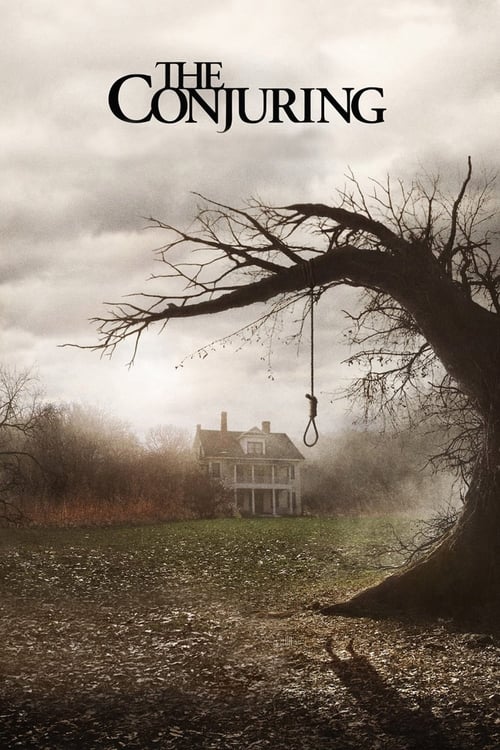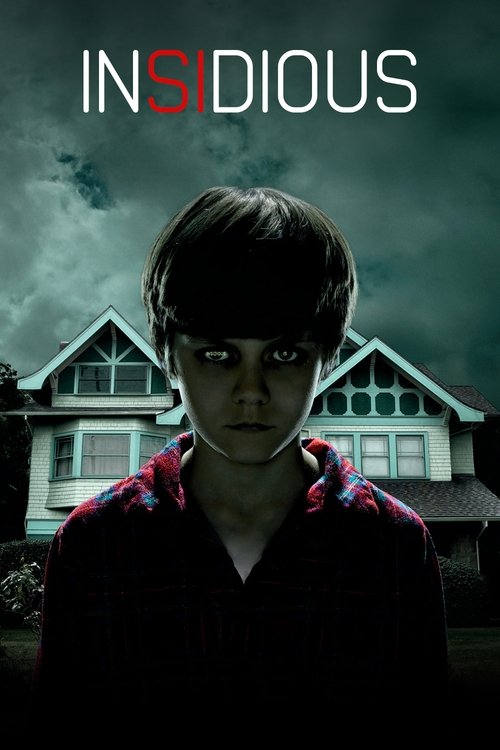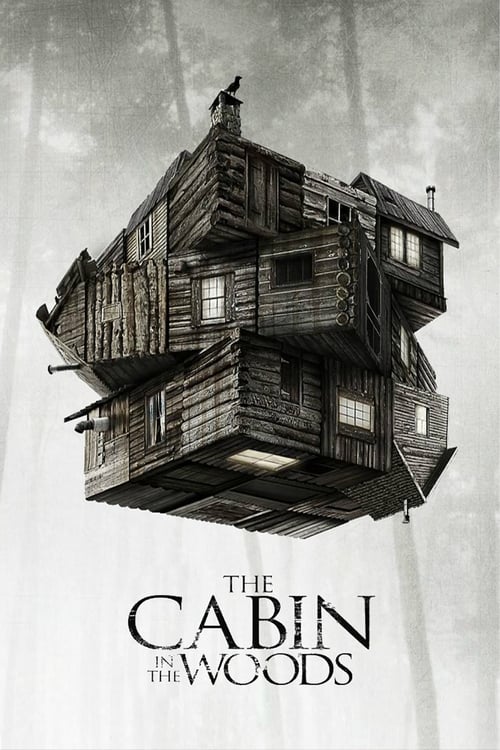
Ask Your Own Question
What is the plot?
Curtis LaForche wakes abruptly from a nightmare, drenched in sweat, his breath ragged. In his dream, a monstrous storm rages--a sky swollen with black clouds, thunder booming like the roar of some ancient beast, and rain falling thick and oily, like motor oil slicking over everything it touches. Lightning forks violently, illuminating the chaos. This nightmare is vivid and visceral, but when Curtis opens his eyes, the world outside his small Ohio home is quiet, normal, and indifferent to his terror.
Curtis is a hardworking construction worker, steady and reliable, married to Samantha LaForche. Their life is modest but stable. Their daughter, Hannah, is a bright and loving child, though deaf, communicating fluently in sign language. The family lives quietly in a small town where everyone knows each other. Curtis's friend and coworker Dewart often works alongside him at the construction site, sharing the rhythms of their blue-collar lives.
But Curtis's mind is not at peace. The nightmares persist, bleeding into his waking hours as unsettling visions. He sees the storm again and again--ominous, apocalyptic, and relentless. Thick, oily rain falls from a sky that seems to pulse with malevolence. Thunder crashes with unnatural intensity, and lightning flashes with a terrifying brilliance. These are not dreams he can dismiss; they haunt him with a growing urgency.
Curtis's fears are compounded by a dark family secret. His mother, Sarah LaForche, has been institutionalized for paranoid schizophrenia since her early thirties. Now, approaching that same age, Curtis is gripped by the terrifying possibility that he may be inheriting her illness. The fear gnaws at him, a shadow lurking behind every vision, whispering that his mind may be fracturing.
At home, Samantha notices changes in Curtis. He grows distant, distracted, and increasingly obsessed with preparing for a disaster no one else sees coming. He begins to build a storm shelter in their backyard, digging deep into the earth, reinforcing walls, and stocking it with supplies. The shelter becomes a physical manifestation of his dread--a desperate attempt to protect his family from the unknown storm he believes is inevitable.
Curtis takes out a home improvement loan to finance the shelter's expansion, straining their finances. He borrows equipment from his employer to dig the shelter, risking his job. His obsession alienates him from coworkers and neighbors. At a community supper, his friend Russell confronts him sharply, frustrated and fearful of Curtis's erratic behavior. "You're scaring people, Curtis," Russell says bluntly. Curtis's response is chilling: "You'll see. You'll all see." The words hang in the air, a cryptic prophecy that deepens the town's unease and isolates Curtis further.
At work, Curtis's focus falters. His preoccupation with the shelter and the storm leads to mistakes and conflicts. Eventually, he loses his job, a blow that threatens the family's stability and Hannah's medical insurance--critical for her cochlear implant surgery. Samantha's concern grows into fear. She supports Curtis but struggles to understand his obsession. In a harrowing nightmare sequence, Samantha dreams of harming Curtis with a breadknife, a terrifying glimpse into her own desperation and the strain his unraveling mental state places on their marriage.
Curtis's internal battle intensifies. He reads medical books, trying to self-diagnose, terrified that his visions are symptoms of schizophrenia. The line between reality and hallucination blurs. His nightmares invade his days; the storm feels imminent, though no one else perceives it. His mother's illness looms like a specter, a genetic curse he fears he cannot escape.
Despite Samantha's pleas, Curtis continues to prepare. The shelter becomes a fortress, stocked and ready. One night, sirens wail through the town, jolting the family awake. Curtis, Samantha, and Hannah rush to the shelter as rain begins to fall--thick and oily, just like in Curtis's visions. The storm is real, but it is not the apocalyptic tempest Curtis feared. It is a severe weather event, a test of his preparations and resolve.
In the aftermath, Curtis seeks professional help. He visits a new psychologist, more experienced and compassionate than his previous doctors. The diagnosis is delivered with clinical clarity: Curtis is suffering from a mental illness, likely schizophrenia. The storm is a metaphor for his deteriorating mind, a terrifying hallucination born of fear and inherited trauma.
This revelation forces Curtis and Samantha to confront their reality. They must navigate the fragile boundary between protecting their family and succumbing to the illness that threatens to consume him. The community remains wary, and Curtis's relationships are strained, but Samantha's loyalty endures.
The film's climax unfolds on a beach, far from their Ohio home. The family stands together, watching the horizon. Dark clouds gather, and the sky darkens ominously. Hannah signs the word "storm," her expression grave. Samantha and Curtis exchange a look, the weight of everything they have endured reflected in their eyes.
As the first drops of rain begin to fall--thick, oily, and unnatural--the line between hallucination and reality dissolves. The storm approaches, vast and unstoppable, just as Curtis had feared. The film ends on this ambiguous note, leaving the audience to question whether the storm is a real disaster or the final manifestation of Curtis's fractured mind.
No lives are lost in the story. The deaths are psychological rather than physical, as Curtis battles the legacy of his mother's illness and the fear of losing himself. The confrontations are internal and interpersonal--between Curtis and his community, his wife, and ultimately himself.
Curtis LaForche's journey is a haunting exploration of mental illness, family loyalty, and the desperate human need to protect those we love from unseen dangers. The storm is both a literal and figurative force, a tempest of nature and mind that threatens to consume everything in its path. The ending's ambiguity leaves us suspended between hope and despair, reality and nightmare, as the LaForche family faces the storm together.
What is the ending?
In the ending of "Take Shelter," Curtis, the protagonist, faces the culmination of his internal struggle with his mental health and the impending storm he believes is coming. He builds a storm shelter in his backyard, which strains his relationships with his wife, Samantha, and their deaf daughter, Hannah. In the final scenes, Curtis has a breakdown, leading to a confrontation with his family. Ultimately, he decides to confront his fears and the reality of his mental illness, leading to a poignant moment of acceptance.
As the film draws to a close, Curtis stands in the storm shelter he has built, surrounded by the chaos of his mind and the physical manifestation of his fears. The film ends ambiguously, leaving the audience to ponder the nature of his visions and the reality of his situation.
In the final act of "Take Shelter," the tension that has been building throughout the film reaches a critical point. The scene opens with Curtis, played by Michael Shannon, standing in the storm shelter he has constructed in his backyard. The shelter is a physical representation of his escalating anxiety and fear of an impending disaster. The walls are lined with supplies, and the atmosphere is heavy with the weight of his obsession.
Curtis's wife, Samantha, portrayed by Jessica Chastain, enters the shelter, her expression a mix of concern and frustration. She has been increasingly worried about Curtis's mental state, as his behavior has become erratic and withdrawn. The couple has been through a lot, and Samantha's love for Curtis is evident, but so is her fear of losing him to his delusions.
As they talk, Curtis's internal conflict becomes palpable. He reveals his visions of a catastrophic storm, which he believes is coming to destroy their lives. Samantha tries to reason with him, urging him to seek help and to trust in their family. However, Curtis is adamant that he must prepare for the worst, convinced that his dreams are prophetic. The emotional stakes are high, and the tension between them escalates as Curtis's fear clashes with Samantha's desire for normalcy.
In a pivotal moment, Curtis's breakdown occurs. He lashes out, overwhelmed by the pressure of his fears and the strain on his family. This confrontation is raw and emotional, showcasing the depth of his struggle. Samantha, feeling helpless, pleads with him to let her in, to share the burden of his fears. The scene is charged with emotion, highlighting the love and desperation that exists between them.
The narrative then shifts to a scene where Curtis is at work, and he is confronted by his colleagues. They notice his erratic behavior, and the tension in the workplace mirrors the chaos in his mind. Curtis's internal battle is reflected in his interactions, as he struggles to maintain a facade of normalcy while grappling with his mental health.
As the film progresses, Curtis's visions become more intense, culminating in a scene where he experiences a vivid hallucination of a storm. The imagery is striking, filled with dark clouds and violent winds, symbolizing the turmoil within him. This moment serves as a climax, where the line between reality and his mental state blurs.
In the final scenes, Curtis makes a decision to confront his fears head-on. He takes Samantha and Hannah to the storm shelter, where he reveals the extent of his visions and the impact they have had on him. This moment of vulnerability is crucial, as it signifies his acceptance of his mental illness and the need for support from his family.
The film concludes with a powerful image of Curtis standing in the shelter, surrounded by the remnants of his fears. The storm he has been preparing for is not just a physical threat but a metaphor for his internal struggles. The ending is ambiguous, leaving the audience to ponder whether Curtis's fears will come to fruition or if he can find peace within himself.
As the credits roll, the fate of each main character is left somewhat unresolved. Curtis is still grappling with his mental health, but he has taken a step towards acceptance and seeking help. Samantha remains by his side, embodying the strength and resilience of their relationship. Hannah, their daughter, is a symbol of hope and innocence, representing the future they must navigate together. The film closes on a note of uncertainty, reflecting the ongoing battle with mental illness and the importance of family support in facing such challenges.
Is there a post-credit scene?
The movie "Take Shelter," produced in 2011, does not have a post-credit scene. The film concludes with a powerful and ambiguous ending that leaves viewers contemplating the protagonist's mental state and the nature of his visions. After the climax, where Curtis, played by Michael Shannon, confronts his fears and the potential hereditary nature of his mother's mental illness, the film ends on a poignant note without any additional scenes or content after the credits. The focus remains on the emotional and psychological journey of Curtis, emphasizing the themes of fear, family, and the struggle with mental health.
What triggers Curtis's visions and nightmares throughout the film?
Curtis begins experiencing disturbing visions and nightmares that are triggered by a combination of stress from his job, the impending birth of his second child, and a family history of mental illness. These visions include apocalyptic storms and violent imagery, which lead him to question his own sanity.
How does Curtis's relationship with his wife Samantha evolve as the story progresses?
As Curtis's mental state deteriorates, his relationship with his wife Samantha becomes strained. Initially supportive, Samantha grows increasingly concerned about Curtis's erratic behavior and the secrecy surrounding his actions, such as building a storm shelter. This tension culminates in emotional confrontations, revealing their deep love but also the fear and uncertainty that Curtis's condition brings to their family.
What role does the character of Curtis's mother play in the story?
Curtis's mother, who suffers from paranoid schizophrenia, serves as a critical point of reference for Curtis's fears about his own mental health. Her past experiences and the impact of her illness on their family haunt Curtis, intensifying his anxiety about potentially inheriting her condition and the implications it would have for his family.
What is the significance of the storm shelter that Curtis builds?
The storm shelter that Curtis builds symbolizes his growing paranoia and desperation to protect his family from the impending doom he believes is coming. It becomes a physical manifestation of his internal struggle, representing both his desire to safeguard his loved ones and his fear of losing control over his mind and reality.
How do the townspeople react to Curtis's behavior and the shelter he constructs?
The townspeople react with a mix of concern and skepticism to Curtis's increasingly erratic behavior and the construction of the shelter. Some express worry for his mental health, while others view him as an oddity. This social pressure adds to Curtis's isolation, as he feels misunderstood and judged, further complicating his emotional turmoil.
Is this family friendly?
"Take Shelter," produced in 2011, is not considered family-friendly due to its intense themes and psychological elements. Here are some potentially objectionable or upsetting aspects that might affect children or sensitive viewers:
-
Mental Health Struggles: The film explores themes of mental illness, particularly the protagonist's experiences with anxiety and paranoia, which may be distressing for some viewers.
-
Visions of Destruction: The main character, Curtis, has vivid and disturbing visions of apocalyptic storms and disasters, which can be frightening and unsettling.
-
Emotional Turmoil: The film delves into the emotional strain on Curtis and his family, showcasing moments of intense stress, fear, and conflict that may be difficult for younger audiences to process.
-
Family Strain: There are scenes that depict the strain on family relationships due to Curtis's mental health issues, including arguments and moments of despair.
-
Subtle Violence: While not graphic, there are moments that suggest violence or danger, particularly in Curtis's visions, which may be alarming.
-
Heavy Themes: The overarching themes of fear, uncertainty, and the struggle for stability in the face of potential disaster can be quite heavy and may not be suitable for younger viewers.
Overall, the film's psychological depth and emotional intensity make it more appropriate for mature audiences.




































